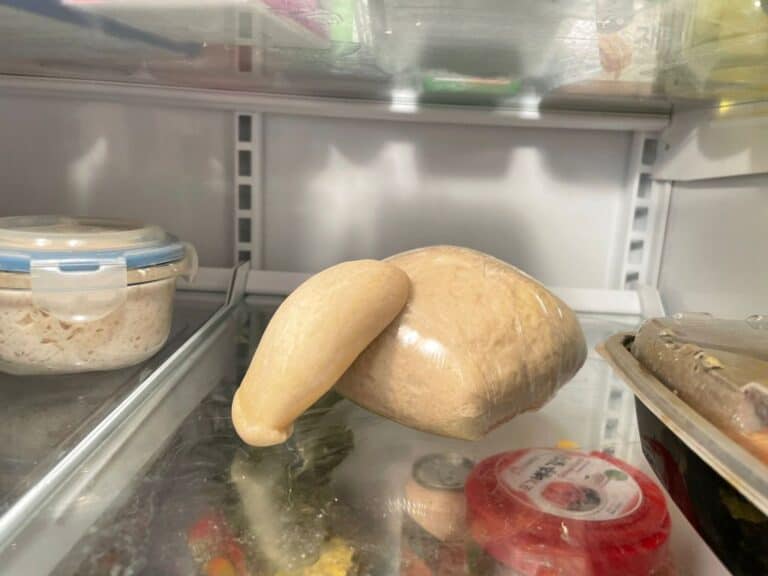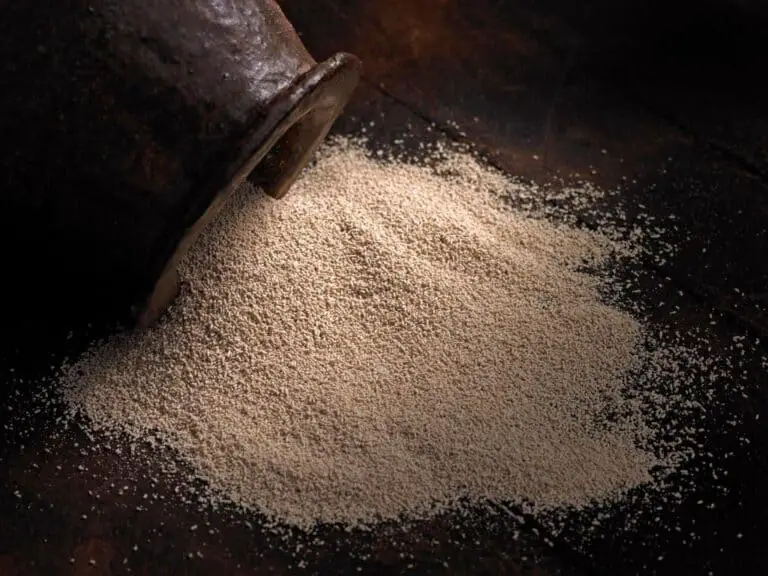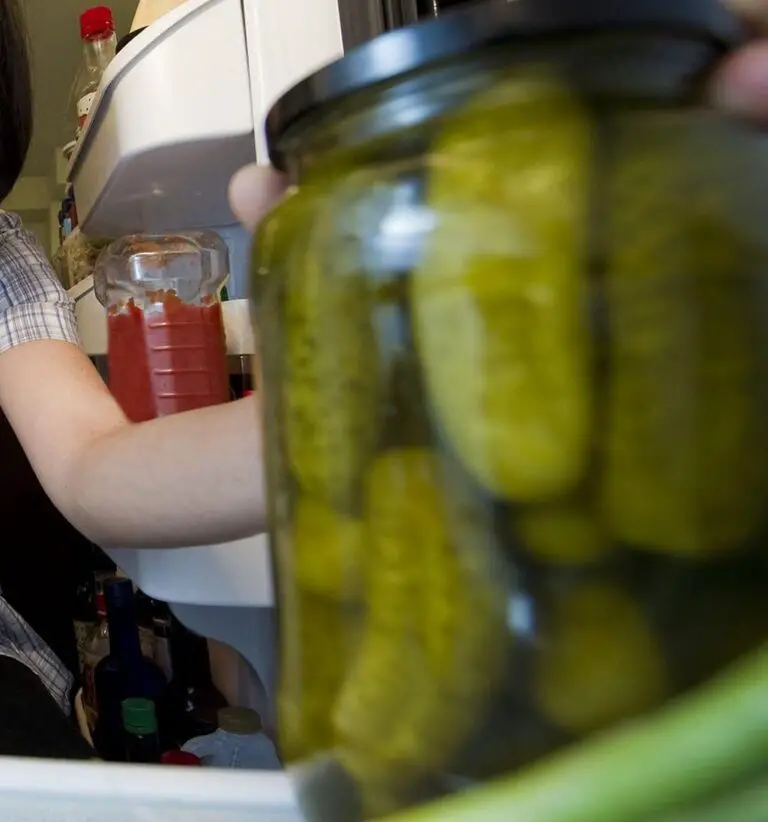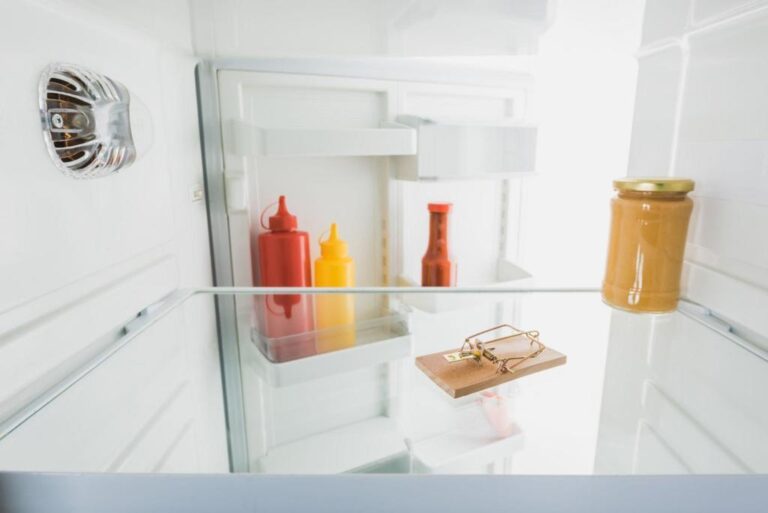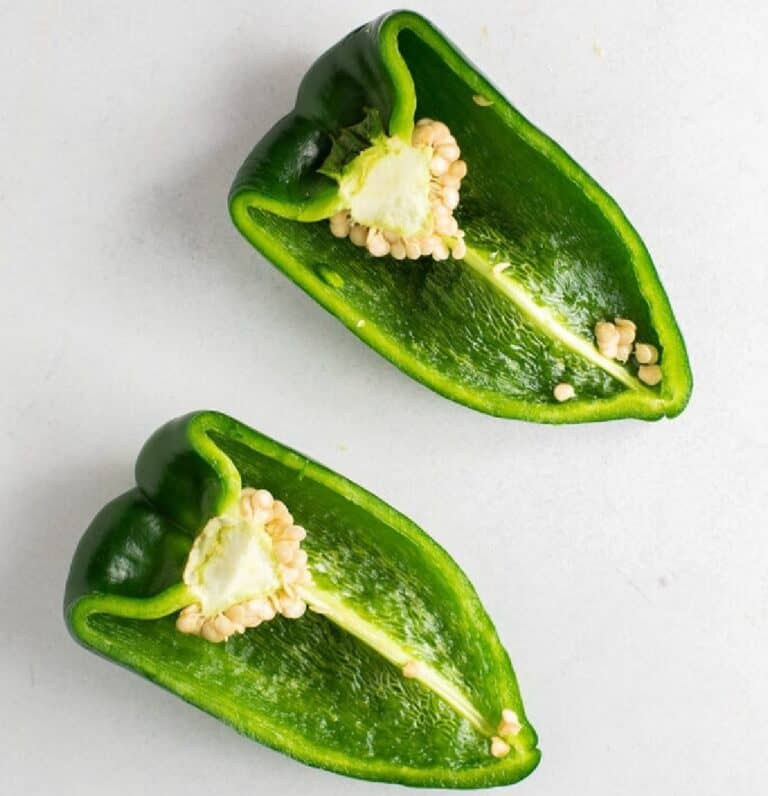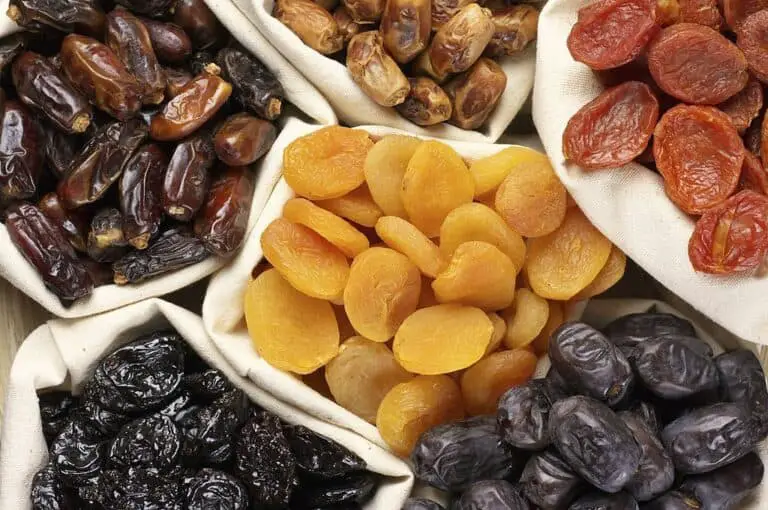Can You Eat Nutritional Yeast Raw? Is Unbaked Yeast Edible?
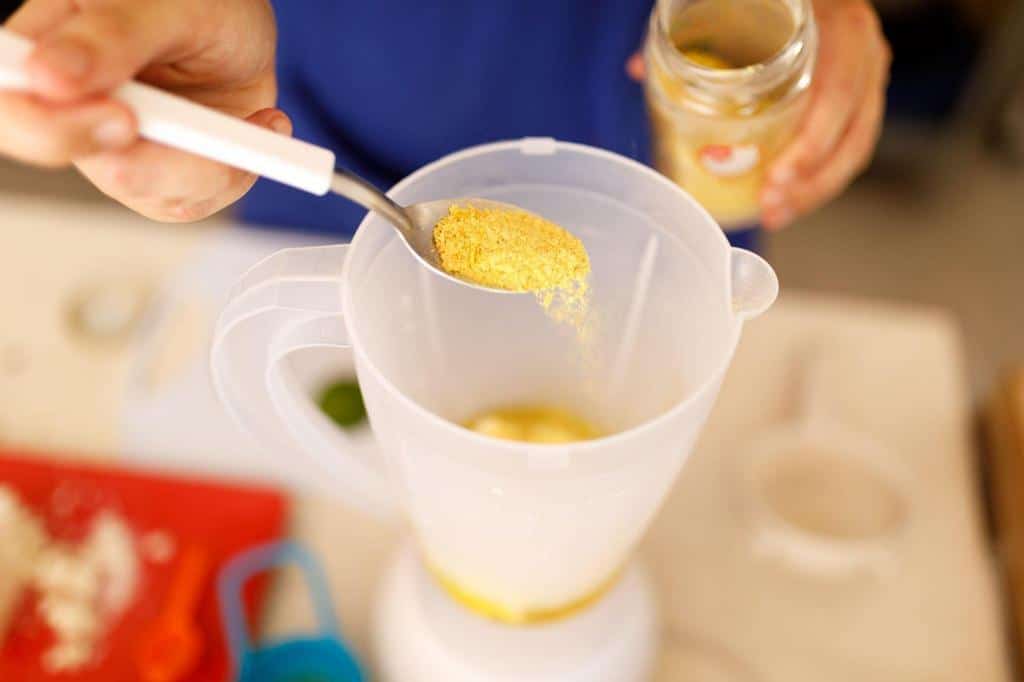
Nutritional yeast is a popular ingredient that’s commonly used in vegan and vegetarian dishes as a substitute for cheese, as well as in a variety of recipes as a flavor enhancer. But as with any new food trend, questions arise about how to safely consume it.
One such question is whether or not nutritional yeast can be eaten raw. After all, it’s easy to grab a handful of those flavorful flakes straight from the jar. But is it safe to do so? Although nutritional yeast is usually believed to be safe to eat raw for most people, there are some people who may experience adverse reactions to it due to their sensitivity to it.
In this article, we’ll talk about the risks of eating raw nutritional yeast and the best ways to prepare and enjoy this nutrient-dense ingredient. So, whether you’re a seasoned nutritional yeast fan or a curious newbie, let’s dive in and find out if unbaked yeast is edible and safe for you.
What Is Yeast and How Is It Used in Cooking?
Yeast is a type of fungus that plays a crucial role in the culinary world. This microscopic organism has been used for centuries to leaven bread and other baked goods, such as pizza dough, cakes, and pastries.
Yeast works by fermenting sugars and converting them into carbon dioxide and alcohol, which creates the fluffy and airy texture of baked goods.
In addition to baking, yeast is also used in brewing beer, making wine, and even in some savory dishes like soups and stews. Yeast can also be found in nutritional supplements and as a flavoring agent in some foods.
There are two main types of yeast used in cooking: baker’s yeast and brewer’s yeast. Baker’s yeast, also known as commercial yeast, is available in dry or fresh form and is used for baking. Brewer’s yeast is typically used in beer and winemaking and is sold in dry or liquid form.
Yeast is a living organism and requires certain conditions to thrive, such as warmth, moisture, and a source of sugar. In baking, fresh yeast is typically activated by mixing it with warm water and a small amount of sugar. The mixture is then left to rest for a few minutes until the yeast starts to foam and bubble, which indicates that it is active and ready to use.
Can You Eat Raw Nutritional Yeast?
Nutritional yeast, also known as “nooch,” has been growing in popularity in recent years as a vegan and vegetarian-friendly source of protein, vitamins, and minerals.
But can you eat it raw? The short answer is yes; you can eat nutritional yeast raw, and many people do. However, there are a few things you should keep in mind before you start adding raw nutritional yeast to your meals.
- First of all, nutritional yeast is an inactive yeast, which means that it has been deactivated and cannot cause bread to rise like active yeast. It is also a complete protein, which means that it contains all nine essential amino acids that our bodies need. It is also rich in vitamins, including vitamin B12, which is essential for vegans and vegetarians who may not get enough of this vitamin from their diet.
- While nutritional yeast is safe to eat raw, some people may experience digestive issues if they consume large amounts. This is because nutritional yeast contains a high amount of fiber, which can cause bloating and gas in some people. If you’re new to nutritional yeast or have a sensitive digestive system, it’s best to start with small amounts and gradually increase your intake to avoid any digestive discomfort.
- When consuming unbaked nutritional yeast, it’s important to choose a high-quality product that has been properly stored and handled. Look for nutritional yeast that is labeled as “unfortified” or “non-fortified,” as some brands add synthetic vitamins to their products. Additionally, make sure to store nutritional yeast in a cool, dry place to prevent moisture and mold growth.
Nutritional Value of Nutritional Yeast
Nutritional yeast is a versatile ingredient that can be found in various forms from different manufacturers. The nutritional value of this ingredient varies depending on the brand you choose. However, on average, two tablespoons (about 30 ml) of nutritional yeast provide 60 calories, five grams of carbohydrates, and four grams of fiber. Also, each serving has nine grams of protein, which is a complete protein that gives the body all nine essential amino acids.
Nutritional yeast can be categorized into two types: fortified and unfortified. Both types contain iron, but fortified yeast provides 20 percent of the recommended daily value, while unfortified yeast provides only five percent. Unfortified nutritional yeast, on the other hand, provides from 35 to 100 percent of vitamins B1 and B2.
Some vegans use nutritional yeast to get vitamin B12, which is important but hard to get on a vegan diet. However, there is confusion about the source of the B12 in nutritional yeast since yeast cannot produce B12.
Some brands of nutritional yeast are fortified with vitamin B12, which is produced separately and then added to the yeast. It’s worth noting that not all brands of nutritional yeast are fortified with B12, so it’s essential to read the label carefully if you’re looking for a source of this essential vitamin.
Are Raw Nutritional Yeast Poisonous?
There is no evidence that raw nutritional yeast is poisonous. Nutritional yeast is generally considered safe for most people, but it may cause negative reactions in individuals who are sensitive to it.
Nutritional yeast is typically sold in the form of flakes or powder and is made from a type of yeast called Saccharomyces cerevisiae. While nutritional yeast is safe to consume, raw nutritional yeast can be harmful and should not be eaten.
WARNING
Raw nutritional yeast has enzymes that can break down proteins in the body, which can cause digestive problems and a lack of nutrients. It can also contain harmful bacteria and toxins that can cause food poisoning and other health problems. Also, it can be hard for the body to digest unbaked raw nutritional yeast, which can cause discomfort and other digestive problems.
How to Safely Prepare Nutritional Yeast for Consumption
Because it is high in protein and vitamins, nutritional yeast is often used in vegan and vegetarian diets. However, it is important to prepare nutritional yeast safely to avoid the potential risks associated with consuming raw yeast. Here are some tips for safely preparing nutritional yeast for consumption:
- Purchase high-quality nutritional yeast: It is important to purchase nutritional yeast from a reputable source that has been certified as safe for consumption. Look for brands that have been tested for contaminants, such as lead and other heavy metals.
- Check the expiration date: Nutritional yeast can go bad if it is not stored properly or if it is past its expiration date. Check the expiration date on the package before consuming it.
- Deactivate the yeast: To safely consume nutritional yeast, it should be deactivated or cooked. Deactivated nutritional yeast has been heated to a high temperature, which kills off any harmful bacteria and enzymes while preserving the nutritional benefits. It can be added to dishes as a seasoning or flavoring agent.
- Use the correct amount: Nutritional yeast is a potent ingredient and should be used in moderation. Adding too much nutritional yeast to a dish can cause an overpowering flavor and can also lead to digestive issues.
- Store properly: Nutritional yeast should be stored in a cool, dry place to prevent moisture and bacterial growth. Once opened, it should be stored in an airtight container in the refrigerator to maintain its freshness.
How to Use Nutritional Yeast in Cooking
Nutritional yeast is a versatile ingredient that can be used in a wide range of recipes to add flavor and nutritional value. Here are some ways you can use nutritional yeast in your cooking:
- As a cheese substitute: Nutritional yeast has a nutty, cheesy flavor that makes it an excellent substitute for cheese in vegan and vegetarian dishes. Sprinkle it over popcorn or pasta, use it in vegan cheese sauces, or add it to vegan pesto for a cheesy flavor.
- In soups and stews: Nutritional yeast can add depth and richness to soups and stews. Add a tablespoon or two to your favorite recipe to enhance the flavor and boost the nutritional value.
- In baked goods: While nutritional yeast won’t make your bread rise like active yeast, it can add a nutty flavor to baked goods. Try adding a tablespoon or two to your favorite bread or muffin recipe for an extra boost of flavor.
- As a seasoning: Nutritional yeast can be used as a seasoning to add flavor to any dish. Sprinkle it over roasted vegetables, use it in salad dressings, or add it to marinades for a delicious umami flavor.
- In scrambled eggs or tofu: Nutritional yeast can be used to add a cheesy flavor to scrambled eggs or tofu. Simply whisk it into the eggs or tofu before cooking for a delicious and nutritious breakfast.
When using nutritional yeast in your cooking, it’s important to keep in mind that a little goes a long way. Start with small amounts and taste as you go to avoid overpowering your dish. Also, make sure to pick a high-quality product that has been stored and handled properly to keep it fresh and full of flavor.
Yeast is a versatile and essential ingredient in many recipes, and it is important to understand how it works and how to properly use it to achieve the desired results. With a little practice and patience, anyone can learn how to incorporate yeast into their cooking and baking repertoire.

